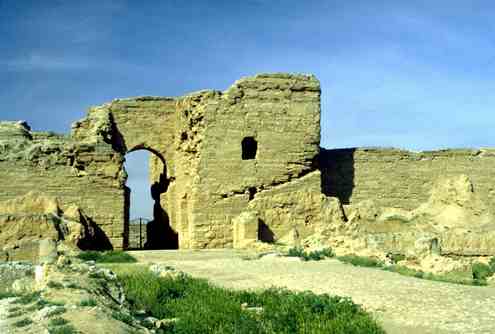The Resurgence of the Gospel, Part Two: Recharting the Christian World Mission
The early Christian writer Evagrius lived at the time referred to in the book. For many years, from 533 till the nineteenth century, The Syriac translation lay in state in a library in Kotchanes in Kurdistan. Travelers in the 1500’s told about seeing it. Luther himself had seen it and read it in a German translation. The point of mentioning it is that the Bazaar of Heracleides, in its Syriac rendition, portends the importance of Nestorius and the Bazaar of Heracleides for the advance of the gospel across the whole face of Asia from Damascus to Mongol China.
On the other side of the controversy between Nestorius and Cyril of Alexandria, Cyril was freed from debating Nestorius to return to Alexandria in Egypt and furthering the extension of the gospel into the upper Nile into Nubia, now known as the Sudan and into Abyssinia, an area known to the Romans as Ethiopia. Two major missionary efforts were spawned by the results of the decisions of the two councils of Ephesus and then of the Council of Chalcedon in A.D. 461.
In effect, the controversies and the decision at Chalcedon re-chartered the entire missionary enterprise. Armenia fell within Rome and Constantinople’s sphere of influence, and the Patriarch of Constantinople sent workers into what is now eastern Europe. The most notable missionaries were a pair of brothers who went north into the Slavic countries and into the Ukraine. The Western Church concentrated its efforts in Italy, Gaul (France), northern and northwestern Africa, Hispania (Spain), Lusitania (Portugal), the Netherlands (Holland, Belgium), Brittania (England), northern Europe, and into the Celtic world (Ireland, Scotland, Breton).

The ruins of Dura-Europos in Syria.
Image: Wikimedia Commons
As impressive as this may seem, it did not compare as to what took place in Africa east of Cyrene (Libya) and in Asia east of Antioch, Damascus, and Dura-Europos. When Cyril went back to Alexandria, he concentrated on the extension of the Gospel toward the upper Nile all the way toward the source of the Nile and toward the lands of Ethiopia and Abysinnia and what now is referred to as Somalia toward the horn of Africa and to some extent across the Sinai peninsula and down the east side of the Arab Peninsula.
As for Nestorius, after the controversies and Chalcedon’s decision, he started writing out his thoughts, which included his famous Bazaar, and sharing the gospel of Christ in the countryside east northeast of Antioch, southward into Arabia southeast of Damascus in what was once known as Nabataea, then southeastward going toward the Chaldees. While Egypt’s mission converted the Himyarite Arabs, the Nestorian mission influenced the Ghassinid Arabs just east of what was known as the Decapolis and formerly known as Gilead, Ammon, Moab, and Edom.
What really makes this two-prong advance of interest is that later, down through the years, the two forces of Cyril and Nestorius would occasionally bump into each other, each stressing their differences but eventually learning how to work together toward the conversion of Kereite Mongols in central Asia. How that occurred is a story in and of itself.
Category: Church History, Fall 2018


